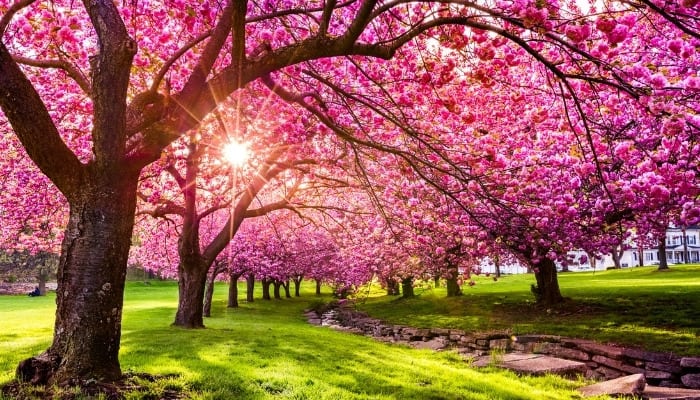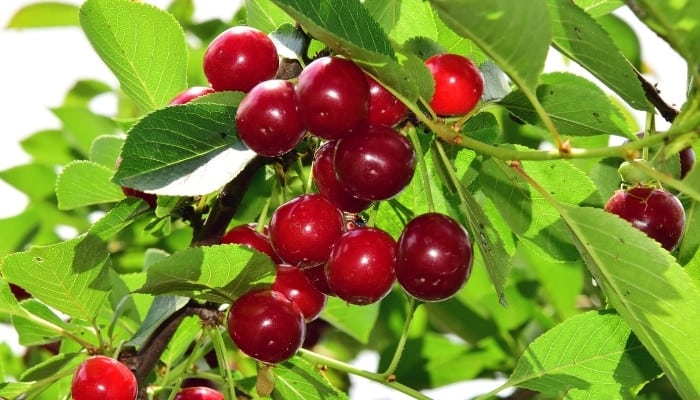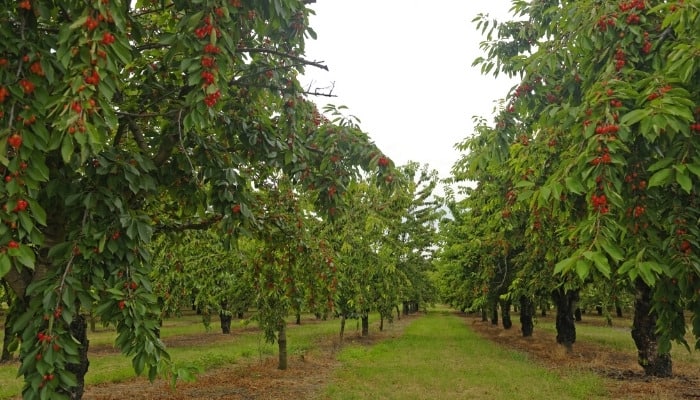Is there anything more satisfying than indulging in a delectable cherry pie or a tart, garnished with a perfectly plump red cherry? Absolutely not!
Now imagine that cherry being bitter to the taste. It doesn’t sound so nice after all, does it? Which brings us to the question – are all cherries edible?
Prunus, commonly known as cherry trees, come in many varieties and are categorized by their flowers or fruit.
The fruit of a cherry tree is known as drupes, and many varieties are loved for their beautiful blossoms.
Cherry trees are deciduous trees and are found in Japan, the United Kingdom, Germany, the United States and Canada.
Cherry trees share the family Rosaceae with peach, plum, and apricot trees.
Although they also share this with almonds and medlars, cherry trees are versatile and can be grown for fruit or ornamental display.
Are all cherry trees edible? Yes and no. All cherries are technically edible, but some are considered inedible because they are very sour. Some cherries, especially wild cherries, should be cooked first before eating them as they can be too bitter when raw. Of course, cherry pits can be toxic, so it’s best not to eat them.
Not too clued up on which cherries are best to eat raw or cooked? Read on to find out more!
Ornamental Cherries vs. Edible Cherry Trees
Edible and ornamental trees both produce fruit and blossoms, but they are slightly different.
The ornamental varieties are focused on creating the best fragrant large blooms, while the edible fruiting variety is focused more on the quantity and flavor of the fruit produced.
The fruiting variety is also beautiful but mainly purposed for producing tasty succulent drupes.
Do Ornamental Cherry Trees Produce Fruit?

Ornamental cherry trees produce fruit but not as prolifically as they do blossoms. An ornamental cherry tree will produce fruit in the summer, and they tend to flower in the spring.
The flowering stage can last for several weeks. It’s interesting to note that the milder the climate, the earlier the blossoms open.
Is the Fruit Poisonous?
The fruit or drupes from an ornamental cherry tree are not poisonous to eat.
However, the fruit from an ornamental cherry tree will not taste as nice or have as much flesh as those from an edible cherry tree.
What Does the Fruit of Ornamental Cherries Taste Like?
The fruit from an ornamental cherry tree is incredibly bitter and sour. Usually, only birds or wildlife will feed on them.
The fruit is not very fleshy and relatively small, with a tiny amount of fruit around the pit.
Ornamental Cherry Fruit Uses
The fruit from an ornamental cherry can be cooked to make it more edible, but usually, these cherries are considered inedible (due to taste, not toxicity).
Fruit From Edible Cherry Trees

Depending on the type of cherry tree, the fruit can range in color and flavor. They can range from deep red to black or yellow with a red hue.
Again, the flavor depends on the type of tree, and the flavor can vary from sweet to exceptionally sour.
Sweet cherries are best enjoyed straight from the tree when ripe, and the more sour variety is versatile in cooking and jam making.
Edible cherry trees can grow to an astounding 26 feet high and have a medium growth rate. However, these trees take several years to mature and produce fruit.
The amount of fruit produced is dependent on variety, weather, pollination and tree age. A fully mature commercial tree can produce almost half a ton of fruit at approximately 15 years old.
How long it takes for the fruit to ripen depends on the variety of cherry tree. Ripening can take anywhere from 55 days to 90 days.
The tree variety, the weather, and the temperature control when the cherries will ripen. Harvesting cherries is usually done in early summer for about three weeks.
You can expect to harvest every few days. The cherries need to be firm and red in color before you harvest them. It’s a good idea to taste the cherries before you start to harvest them.
Delaying picking for a few days allows the sugar levels to rise, giving the sweet cherries an even sweeter flavor.
Once you have harvested, you can cut growth back to encourage more fruit production the following year. With harvesting occurring in early summer, pruning is advised in the early spring.
Do not prune a cherry tree in winter as this puts the tree at risk of fungal infections.
What Parts of Cherry Trees Are Poisonous?
The leaves, blossoms, stems, and leaves of the cherry tree are toxic. The cherry pit and seeds are also poisonous, and they should not be consumed as they contain cyanogenic glycosides.
When consumed in large quantities, these cyanogenic glycosides can lead to difficulty breathing, dilated pupils, and shock, leading to death if enough is consumed.
How Do I Know if My Cherry Tree Is Edible?
All cherry tree fruits are edible. With inedible cherries, it is just the taste that might not be palatable. It is not recommended to eat any other part of the cherry tree except for the fruit.
Edible Cherry Trees: Popular Varieties
The most popular varieties of edible cherry trees are:
- Kordia
- Morello
- Stella
- Sylvia (mini variety)
- Bing
Related Questions:
Are Wild Cherries Poisonous to Dogs?
Yes, wild cherries trees are toxic to dogs. Cherry seeds contain high levels of cyanide and can cause a dog to collapse and die if large quantities are ingested.
Do All Cherry Trees Bear Fruit?
Not all cherry trees bear fruit; in most cases, the flowering varieties are designed only to produce flowers. If they produce small cherries, they are very sour or bitter, and only birds can eat them.
Conclusion
While we love the taste of fresh sweet cherries straight off the tree, we can also appreciate the large blossoms on the flowering-only varieties.
All cherries produced by either type can be eaten, but most people find cherries from the ornamental varieties to be too bitter.

